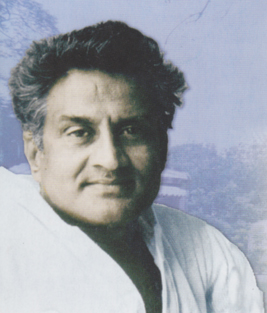His aim: To take science and technology to rural India

Seshadri
Chetput Venkatasubban Seshadri (April 14, 1930-September 17, 1995) conceptualised the M.M. Murugappa Chettiar Research Centre (MCRC) in Taramani, Madras, and directed it from 1976, when it was established, until his untimely death in 1995, cherishing his dream of taking science and technology to the rural people of India.
C.V. Seshadri (CVS) came from a distinguished family of Madras and studied in Bombay and the U.S. He got his Ph.D. (Chemical Engineering) from the Carnegie Mellon University, Pittsburgh, which was followed by a research position at Massachusetts Institute of Technology, Boston. On his return to India, he joined the chemical engineering faculty of IIT, Kanpur [IIT (K)]. In 1965, while at IIT(K), he, with S.V. Patankar, wrote the textbook Elements of Fluid Mechanics (1971). CVS left IIT (K) in 1974 to join Industry in Bangalore, where he set up India’s first fodder-yeast plant.
From the time he became Director of MCRC, his emphasis was on the technology that would be appropriate for India in the context of the then Indian economic scene and the country’s burgeoning needs. At MCRC, CV’s passion for Gandhian science blossomed. By choosing to walk on untreaded paths, he blazed new trails in developing several appropriate technologies, including that of exploring the benefits of a microscopic photosynthetic cyanobacterium, Spirulina. In the 1980s, CVS and his team studied Spirulina (the present valid name is Arthrospira) and its strengths as an excellent nutrition supplement that included vitamins B1, B12, B16, C, E, besides several proteins.
The world’s largest Spirulina-based nutrition trial on 5000 children was completed by MCRC in 1992, with support from the Government of India. Children were supplied with 1g of ‘processed’ Spirulina for 150 days. This tiny quantity provided the minimal daily requirement of vitamin A (B-carotene), which prevents blindness and other eye diseases. In this extensive trial, CVS et al, noteworthily established that Bitot’s spot, a symptom of vitamin A deficiency that scars the conjunctiva of the eye, dropped from 80 to 10 per cent. One preferred goal of the Madras Spirulina trial was to determine an alternative to the vitamin A therapy, which involved providing massive doses of purified vitamin A, imported from developed countries, every six months to children.
Most vitally, CVS’s Madras trials on Spirulina not only were transparent, but also were developed indigenously with a social purpose. For this effort, CVS in 1987 received the Jamnalal Bajaj Award for Science & Technology for Rural Development.
While in Madras, he actively sought answers to questions on the philosophy of science. He argued that the laws of thermodynamics are enunciated in a way that betrays a deep cultural bias and encourages a specific manner at looking at the world. He was hypercritical of the practitioners and admnistrators of Indian science for being passive receivers of the science and technology declared obsolete by the developed world. His remark, “I could say no one except Indian scientists believe that science is value free,” is profound and students of science should consider this remark seriously. He reiterated that the kind of science and technology he saw around him was a disastrous failure and would never solve India’s problems.
In mid-September 1995, this brilliant science thinker and an avid sea swimmer never returned from the sea. According to Rajni Bakshi (Bapu Kuti, 1998, Penguin Books India, Bombay), “CVS’s youthful zest and enormous energy made it easy to forget the linear dimension of this mortal frame. Yet this is all the sea snatched away. The man’s bequest remains awaiting the nurturing care of fellow-travellers in this and other times.”

